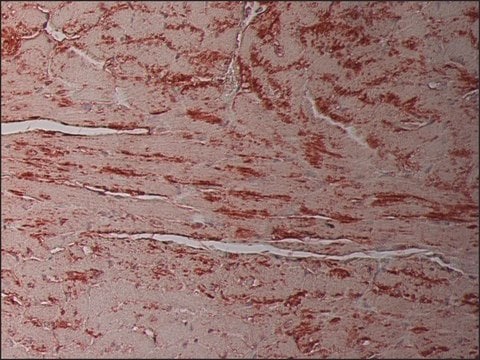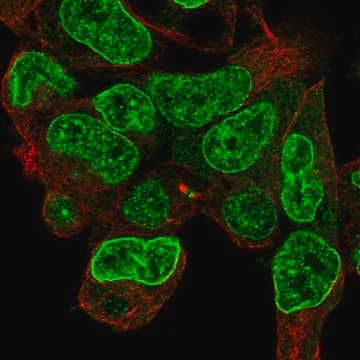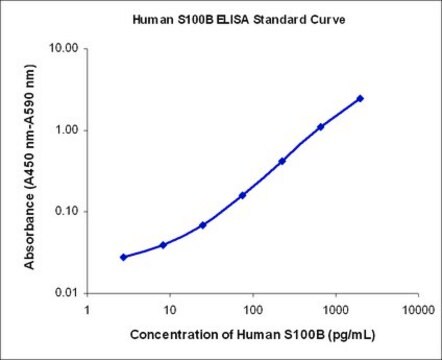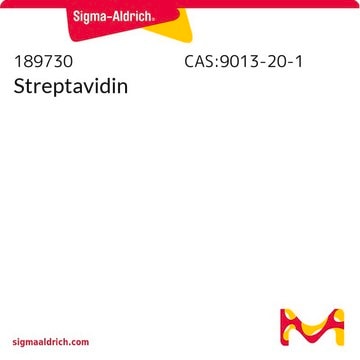The product issue you are reporting should be investigated by our Technical Service team who can assist you with further troubleshooting and/or investigation. We kindly ask you to navigate to the link https://www.sigmaaldrich.com/techservice, click on "Report Product Issues" under the Products Section with all the required information so that a member of our team can reach out to you to assist further. Thank you.
Kluczowe dokumenty
T1192
Anti-Thymine Dimer antibody, Mouse monoclonal
clone H3, purified from hybridoma cell culture
Synonim(y):
Dimer mysiej antytyminy, Przeciwciało mysie dimeru tyminy, Wykrywanie dimerów tyminy
Wybierz wielkość
697,00 zł
Wybierz wielkość
About This Item
697,00 zł
Polecane produkty
pochodzenie biologiczne
mouse
Poziom jakości
białko sprzężone
unconjugated
forma przeciwciała
purified immunoglobulin
rodzaj przeciwciała
primary antibodies
klon
H3, monoclonal
Formularz
buffered aqueous solution
reaktywność gatunkowa
chicken, wide range
opakowanie
antibody small pack of 25 μL
stężenie
~2 mg/mL
metody
capture ELISA: suitable
dot blot: 0.5-1 μg/mL
immunocytochemistry: suitable
izotyp
IgG1
Warunki transportu
dry ice
temp. przechowywania
−20°C
docelowa modyfikacja potranslacyjna
unmodified
Opis ogólny
Immunogen
Zastosowanie
Postać fizyczna
Inne uwagi
Patents WO87/01134, EP 0233 177 B1
Oświadczenie o zrzeczeniu się odpowiedzialności
Nie możesz znaleźć właściwego produktu?
Wypróbuj nasz Narzędzie selektora produktów.
Kod klasy składowania
12 - Non Combustible Liquids
Klasa zagrożenia wodnego (WGK)
WGK 2
Temperatura zapłonu (°F)
Not applicable
Temperatura zapłonu (°C)
Not applicable
Wybierz jedną z najnowszych wersji:
Certyfikaty analizy (CoA)
Nie widzisz odpowiedniej wersji?
Jeśli potrzebujesz konkretnej wersji, możesz wyszukać konkretny certyfikat według numeru partii lub serii.
Masz już ten produkt?
Dokumenty związane z niedawno zakupionymi produktami zostały zamieszczone w Bibliotece dokumentów.
-
When using PN T1192 as a primary antibody (1/200) on UV irradiated skin samples (IHC, Fresh frozen), I get no signal despite using a fluorescently labelled anti-mouse antibody as detection. The blocking is done with BSA.
1 answer-
Helpful?
-
Active Filters
Nasz zespół naukowców ma doświadczenie we wszystkich obszarach badań, w tym w naukach przyrodniczych, materiałoznawstwie, syntezie chemicznej, chromatografii, analityce i wielu innych dziedzinach.
Skontaktuj się z zespołem ds. pomocy technicznej






